CHICAGO – Radio and television stations such as WDIV in Detroit are in a flurry of 75th and 100th anniversaries, as radio arrived in the 1920s and television arrived in the 1940s. These anniversaries are the perfect opportunity for legacy broadcasters to celebrate their histories and call letter equity in order to better build on their historic brands in a digital era.
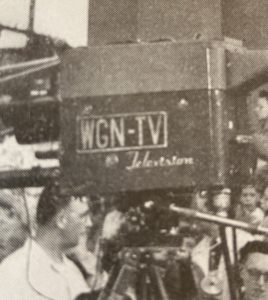
One of those great stations celebrating anniversaries is Chicago’s WGN-TV, which began test broadcasts on Feb. 1, 1948, and signed on March 6, 1948. This year, it is celebrating its 75th Anniversary with dozens of stories and reminiscences. The station was originally part of the McCormick family’s Chicago Tribune. Like its sister AM station WGN, the TV call letters come from the newspaper slogan, World’s Greatest Newspaper.
The station is, and has been, a pioneer in television. This week, WGN’s Mike Lowe reported on the return of a historic camera to the station. The camera, a black and white studio camera RCA TK-10, was used at the original station location. Its return highlights an important aspect of WGN’s history, namely its history of live television production.
WGN was so ahead of its time that its operations were featured in the main textbook for broadcasting used in the 1950s, Handbook of Broadcasting: Fundamentals of Radio and Television. The textbook, used for nascent broadcasting classes, was written by Waldo Abbot, director of broadcasting at WUOM at the University of Michigan, and Richard L. Rider, supervisor of television and motion pictures at WILL-TV at the University of Illinois. The book began as a mimeograph distributed in college courses, and grew as it was published by McGraw Hill beginning in 1937. At the time, the authors said that there were only 689 broadasters in the U.S.
RCA Camera Rescued by Reporter
The camera came from a news reporter named Stephen Gibson, who died in November at age 72. Gibson’s long-time friend, Max Armstrong, the well-known agriculture reporter for WGN Radio and TV, got it from a WGN engineer named Roy Cone.
In 1983, Armstrong hauled it 300 miles and gave it to his buddy, Stephen Gibson, where it sat for the next 40 years until it found its way back home.
At the time, RCA was one of the lead camera brands; others in the 1950s included DuMont, GE and G.P.L. The business of cameras was highly capital intensive. The cameras relied on orthicon tubes, which in the 1950s were approximately $1,200. They were so valuable that you did not even want to remove the lenscap prematurely, for fear of damaging the tubes with light. WGN had the best equipment, and because of its location in Chicago, access to a large TV market.
Cameras were mounted on separate pedestals, many were made by the originator of the studio pedestal, Houston Fearless. Houston-Fearless also made crane mounts, including the Panoram, TC-1 crane (also called a Sanner dolly), and the H-F, a video crane that allowed the cameraman to sit atop it, and guide the camera. The “camera” at the time also included a “camera chain” of items, including camera, power supply and camera control unit.
A similar camera appears in the book; it is used outside
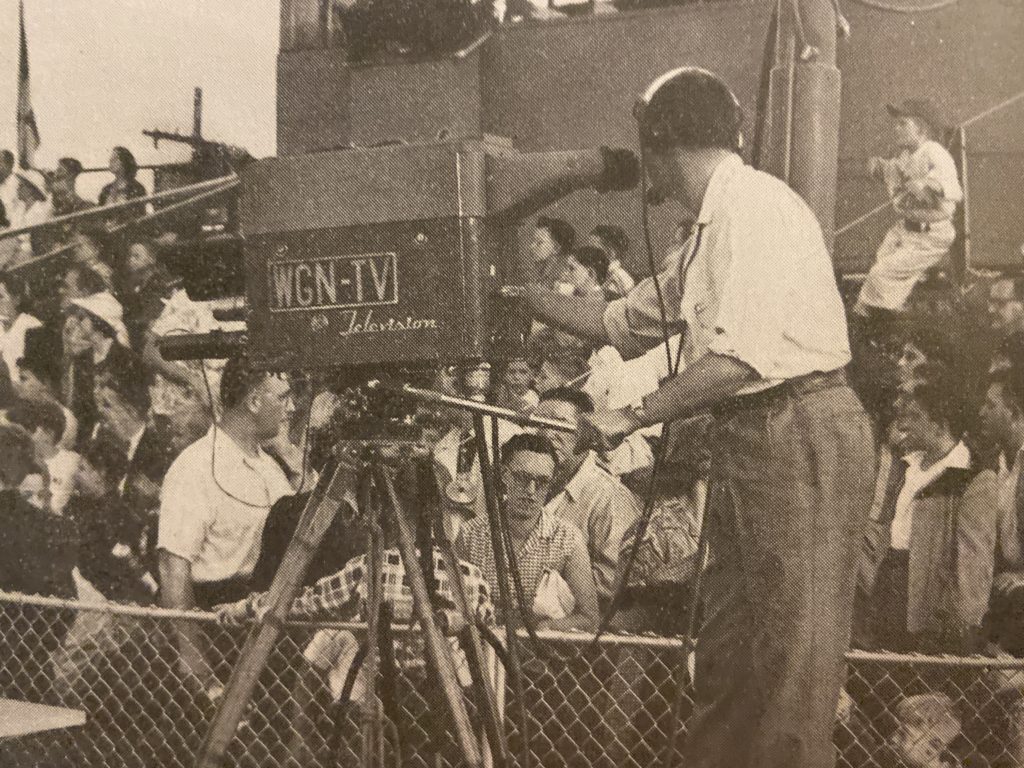
Broadcasting in a Sports Town
The Abbot and Rider broadcasting textbook featured the sports broadcasting operation of WGN, which pioneered live sports broadcasting and the remote. In the early days of television, sports broadcasts were not an easy process. While radio sports had been live for decades, television required a completely new paradigm. Radio only required a telephone line. TV required intricate logistics, and expensive equipment that could not be borrowed from the studio.
WGN’s solution was the Mobile Unit, which could go to Comiskey Park, for instance, and provide a control room for the broadcast. Looking at the photo below, the cables coming out of the back are notable.
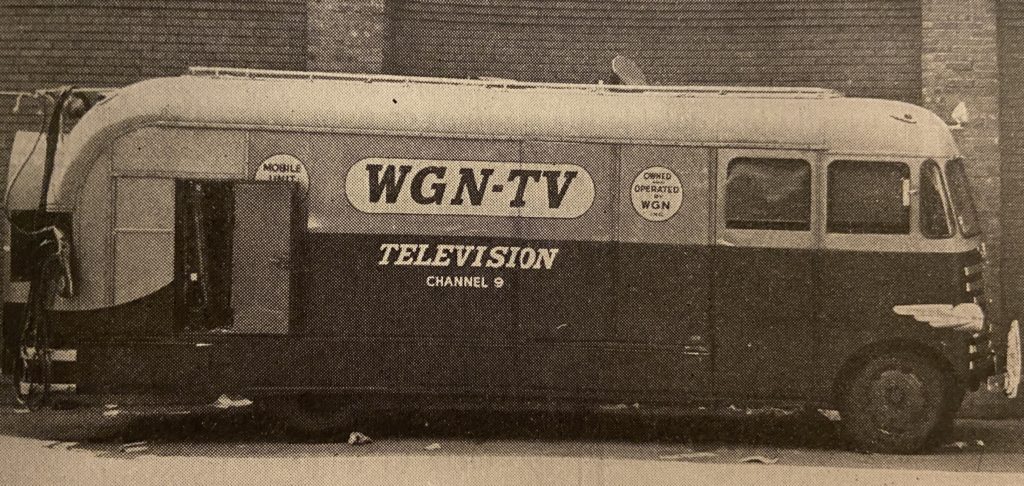
A key aspect of the broadcast was how to get the feed back to the station. With no satellite, the feed had to be organized by AT&T.
Always, what happened on air was a compromise between what the director wanted, and what was possible. Issues that we take for granted in a multi-camera baseball broadcast were not yet decided. With a minimum number of cameras, how would you cover the action with players on all bases?
So new was the process that the textbook advised having cameras only on one side of the action. At the time, the viewer would have been confused. “For instance, if we were to put a camera on sides of the ring opposite each other, and then were to cut from one to the other, what would the result be? Clearly the positons would be reversed…..This is extremely confusing and can only be condemned as poor planning.”
Inside sports were able to be covered with two cameras easily. Boxing or wrestling could have a medium long shot, and a medium close up, and alternate between the two. Football could be shown with two cameras high above the 50 yard line, but four cameras was better, with cameras at the 35 yard line. At WGN, baseball could be aired with four cameras, two high, and two low.
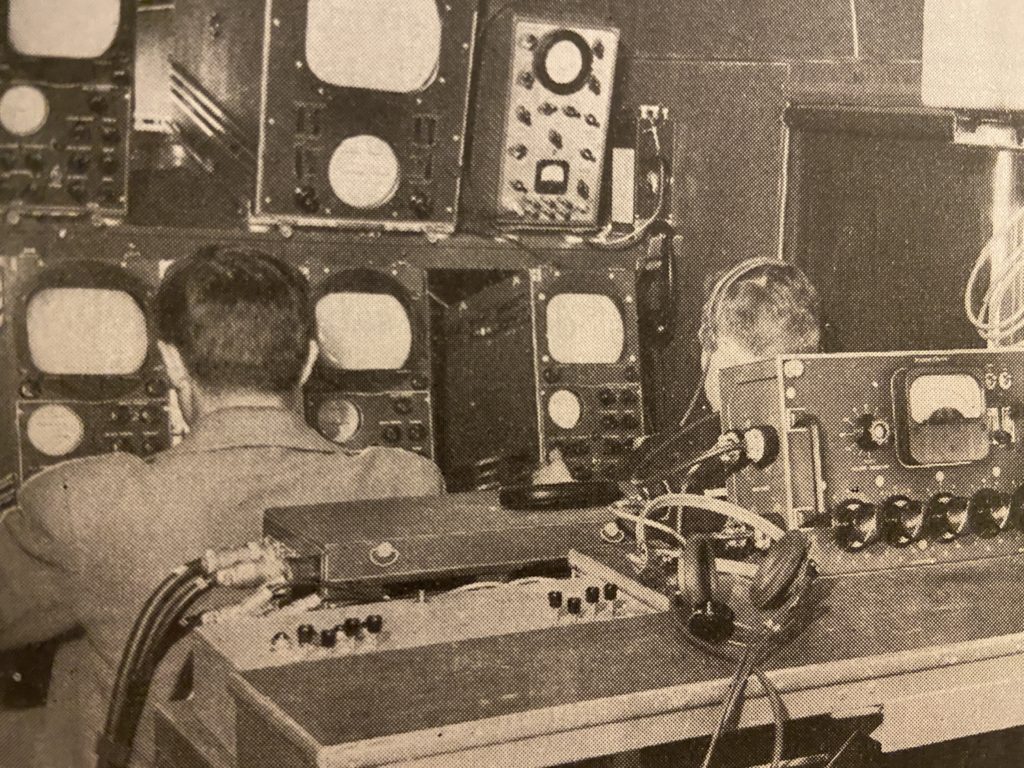
Ultimately, the sports broadcast reduced the role of the director, who did not have time to talk to the cameramen. Instead, they pre-arranged where cameras focused, as a wide shot would be boring, but too many close ups might risk the viewer missing the action. Thus the creation of the “plan” by the director. “The viewer is not interested in the director’s mental state,” wrote Abbot, “he only wants to see as much of the action as possible.”
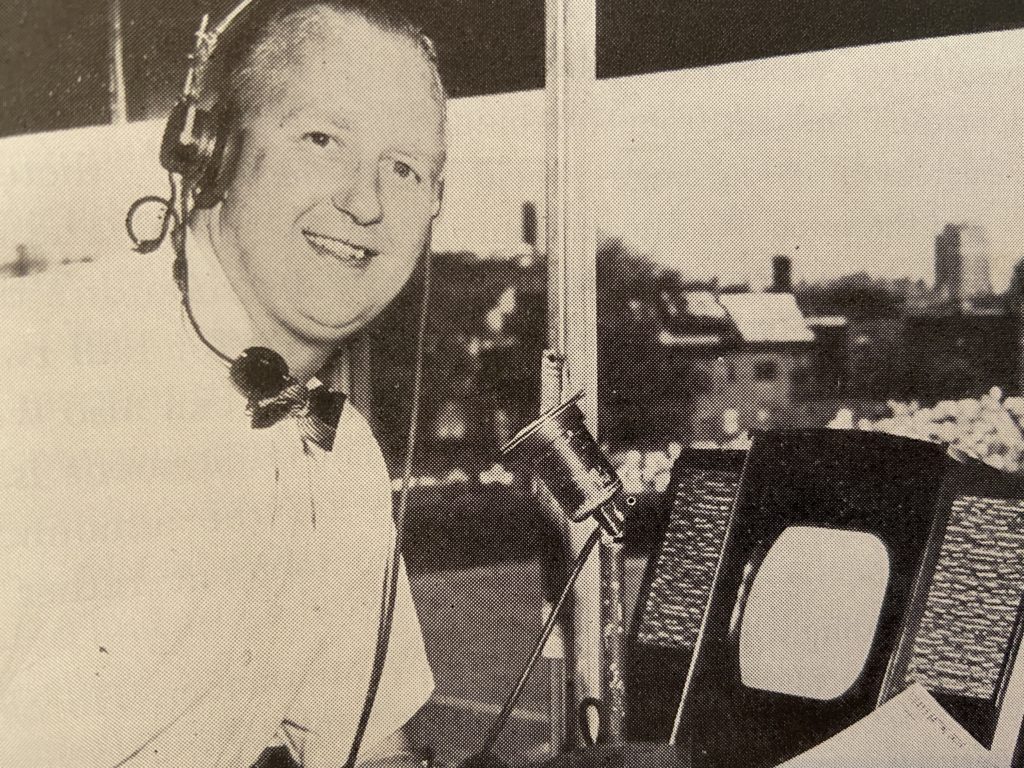
One of the best known early TV sports announcers was Jack Brickhouse, who by 1957 had already announced over 1,000 televised major league games. At the time, the announcer was not seen; there were just not enough cameras, and it was thought that the viewer would be interested only in what the announcer said. Brickhouse did have a monitor, to see what the viewer was seeing.
The television sports announcers like Brickhouse were still operating in the shadow of what was done in radio; but what was new was that Brickhouse would be watching what the viewer at home would see, and also what was on the field.
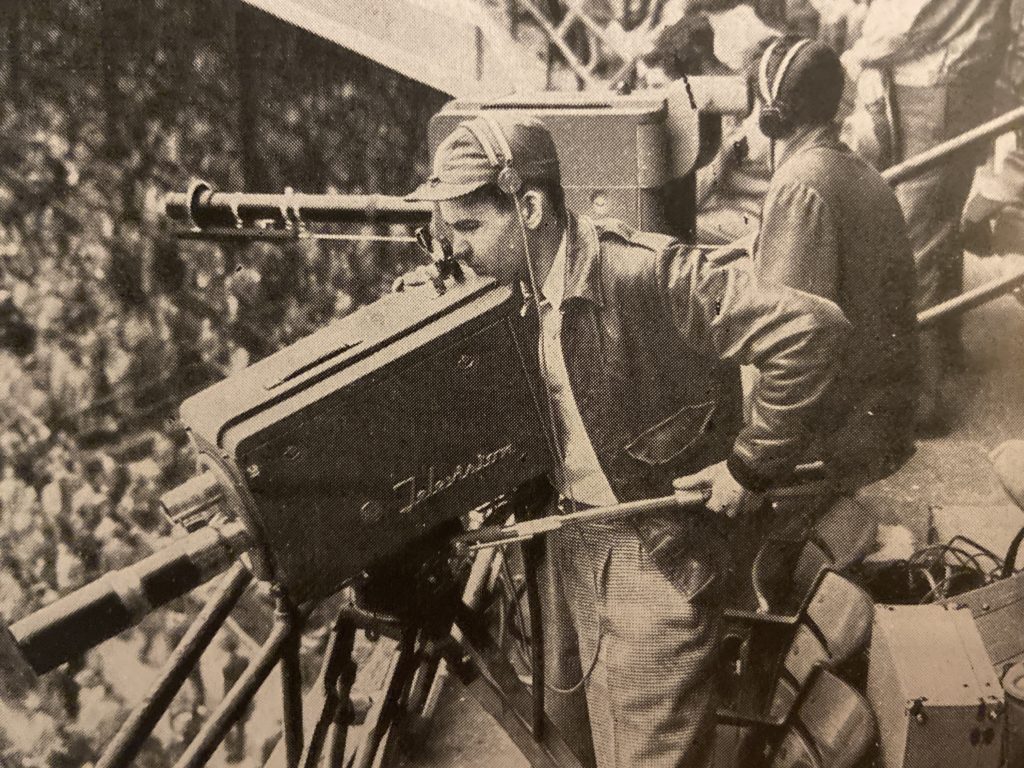

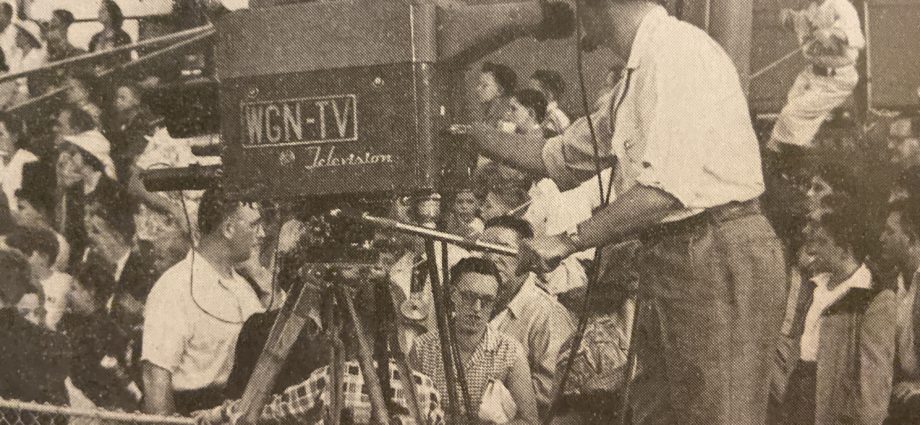


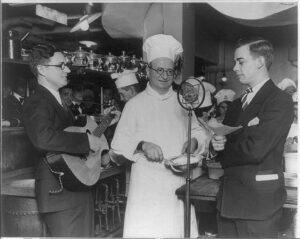
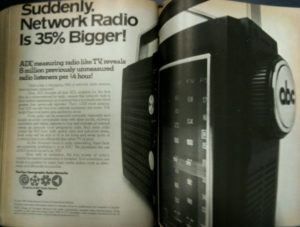
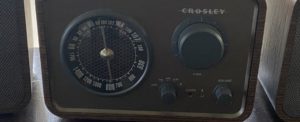


Do not honor WGN. This historic network is now owned by a right-wing organization that callously supports those bone crushing Saudis by broadcasting LIV golf. WGN has forfeited any journalistic integrity that had been previously earned.